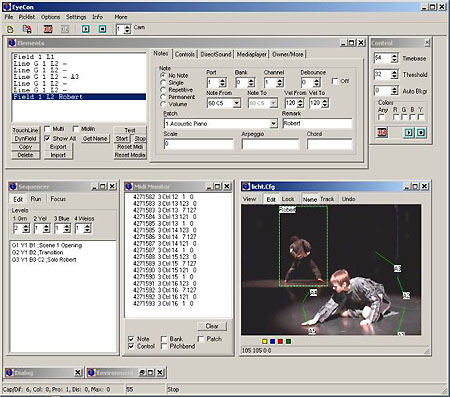An image of the EyeCon interface.
From the
EyeCon website: "Eyecon's main use has been to facilitate interactive performances and installations in which the motion of human bodies is used to trigger or control various other media (music, sounds, photos, films, lighting changes, etc.). EyeCon does this using a video feed from the performance or installation area (any normal video camera may be used)..."
Frieder Weiss, of
Chunky Move and
Glow fame, is also behind EyeCon a visual analysis and triggering software package meant specifically for performance. It seems like a more specialized and perhaps elegant system then offered by
EyesWeb, an open source package that attempts to serve a similar audience.
Along with
Processing (which just dumped the beta tag and has gone v 1.0) and
Isadora I believe that EyeCon/EyesWeb may represent an early iteration of a new key 'dramaturgical software tool' or even stand as the realization of a potential 'new technological theater primitive'.


